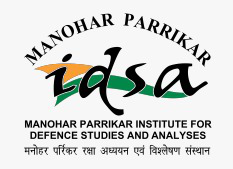The P-75I Saga and India’s Submarine-Building Journey
The P-75I programme can be regarded as an inflection point for strengthening India’s defence industrial ecosystem for achieving ‘atmanirbharta’ (self-reliance) in submarine technology.
The P-75I programme can be regarded as an inflection point for strengthening India’s defence industrial ecosystem for achieving ‘atmanirbharta’ (self-reliance) in submarine technology.
The academia can play a major role by bridging innovation gaps and scaling critical technologies.
India's pursuit of Atmanirbhar Bharat in defence technology is a multi-faceted endeavour, requiring strategic vision, robust collaboration, sustained investment and a commitment to innovation.
The launch of the ADITI Scheme reflects the government’s commitment to promote innovations in defence technologies by Indian start-ups for the armed forces.
Military organisations worldwide have steadily increased reliance on space assets for communications, surveillance, and navigation. India has sufficient space capability as compared to China.
In aerial warfare technology has progressed rapidly from the frail and flimsy machines seen in the air in the first half of the twentieth century. This monograph attempts to commence task of explaining stealth technology, looking at possible counters to stealth and discussing the ways in which stealth technology changes the conduct of aerial warfare.
The military applications of Virtual Reality include those relating to combat training and simulation.
Reluctance to embrace the revolution in open-source intelligence would limit the effectiveness of intelligence agencies in future conflicts.
Critical and Emerging Technologies have become essential components in the modern warfighting domain.



